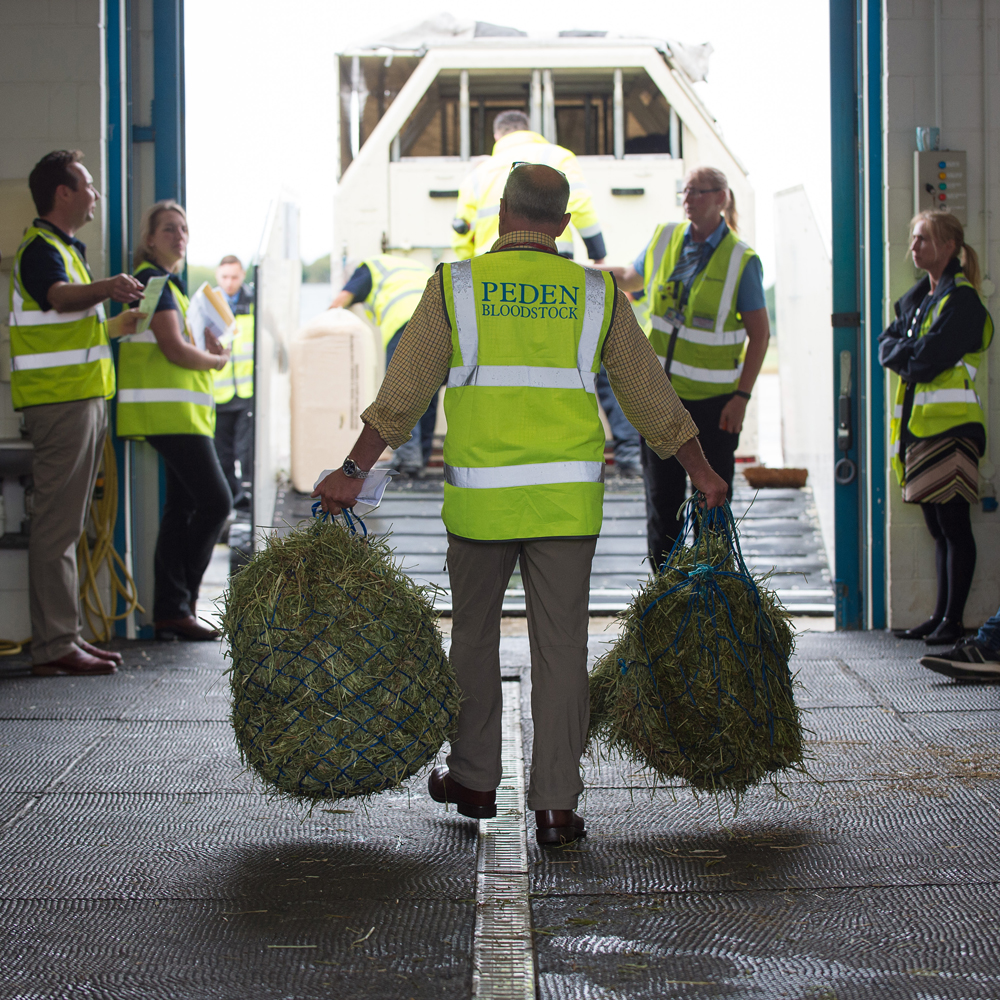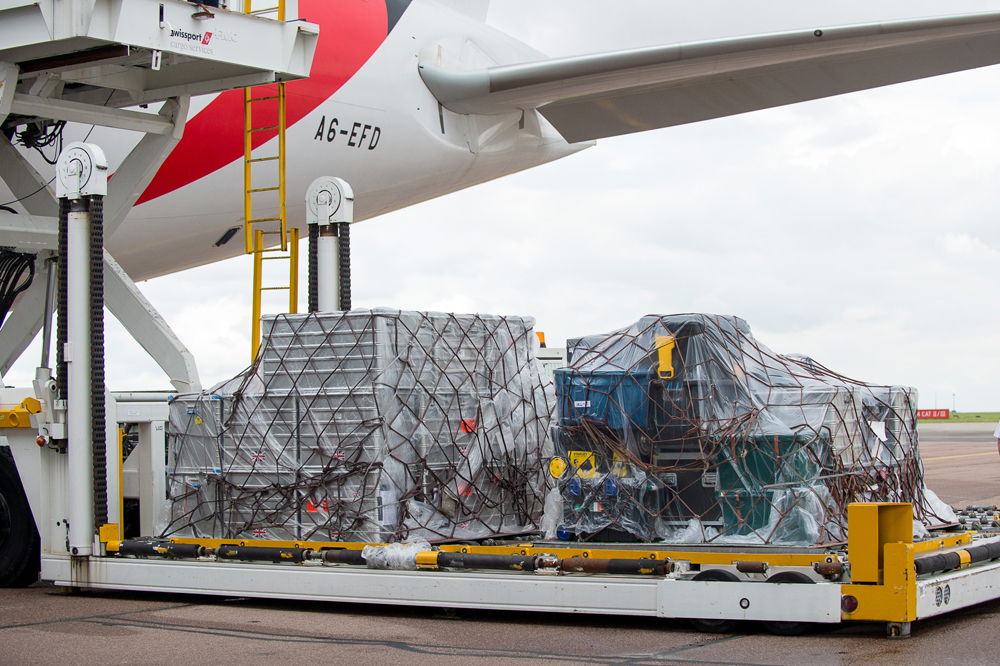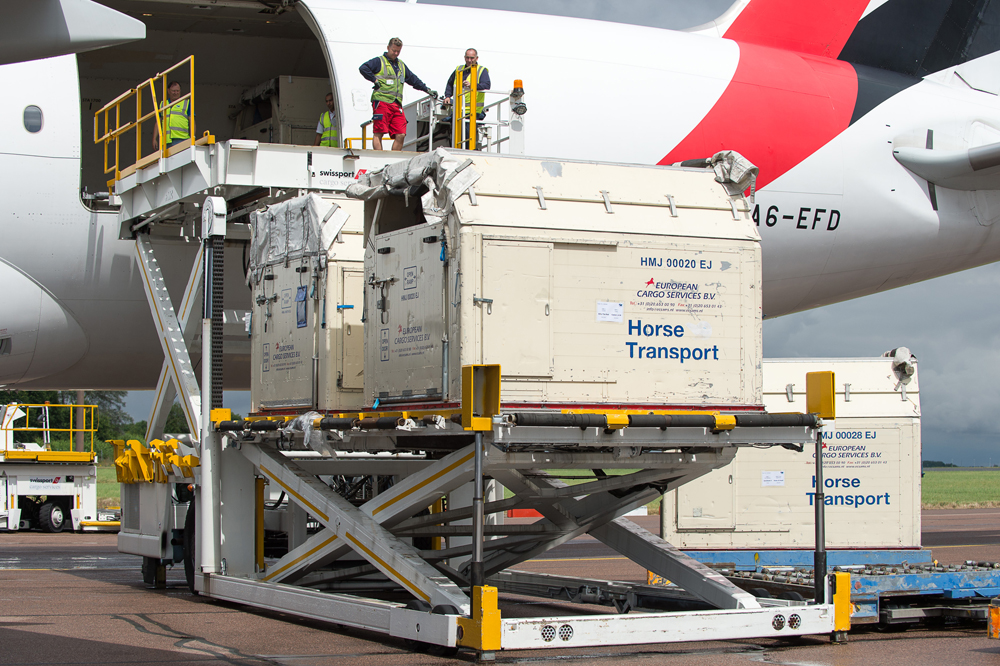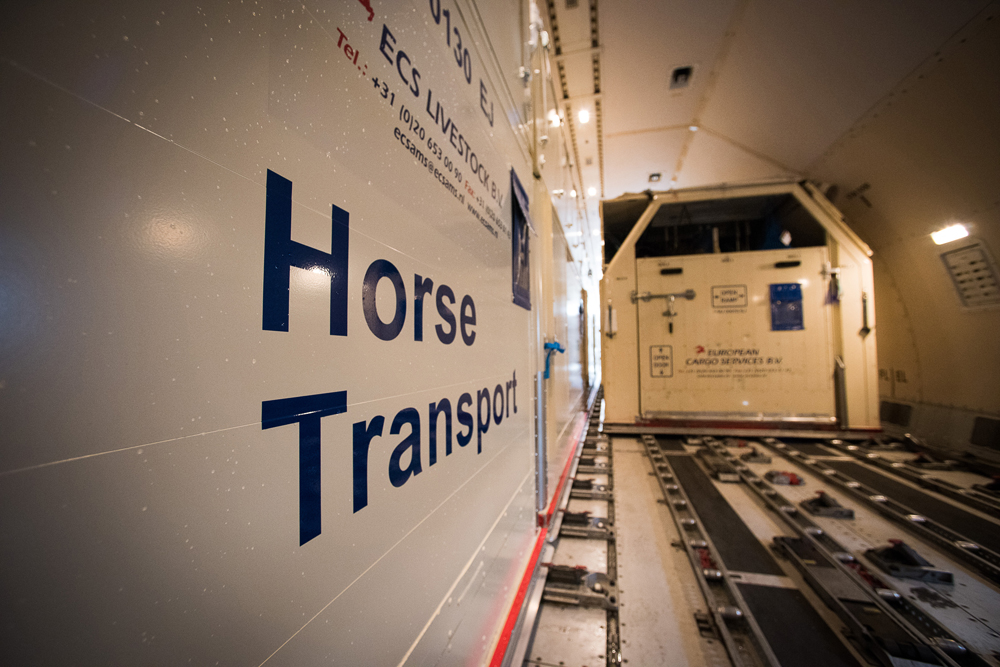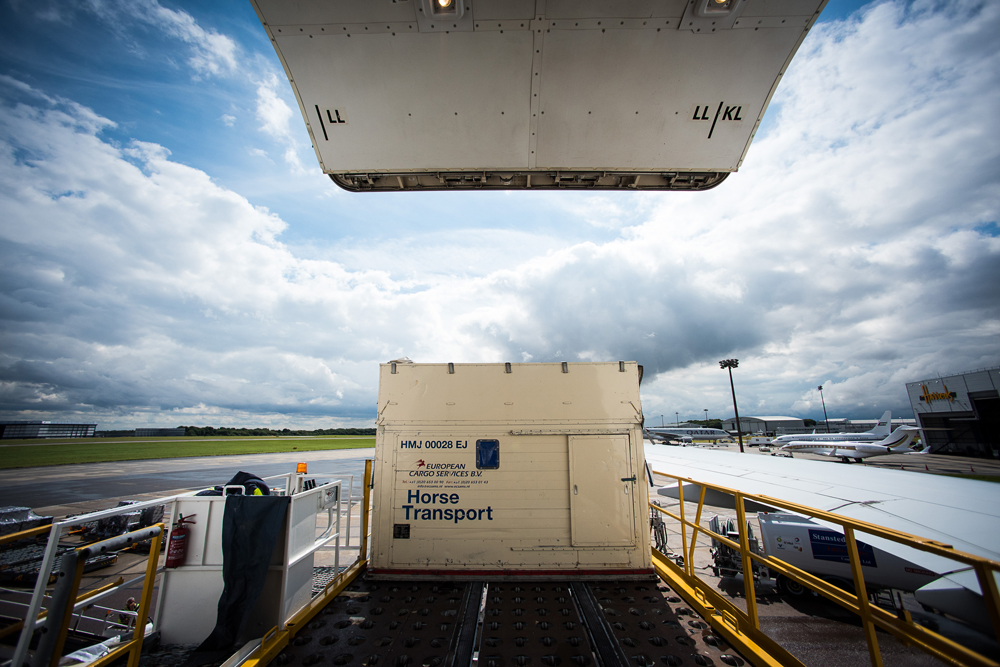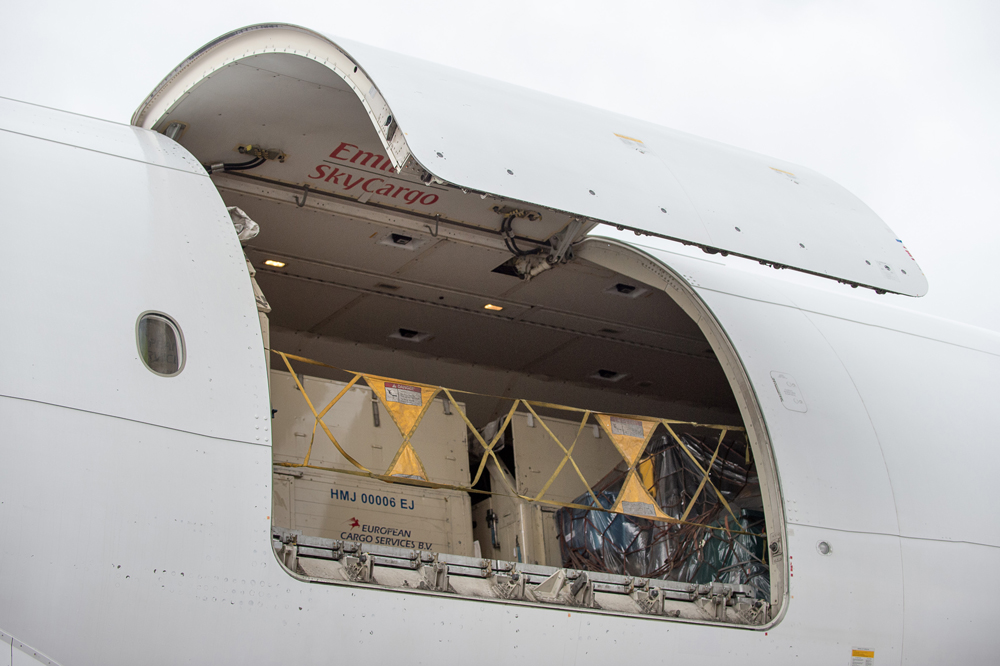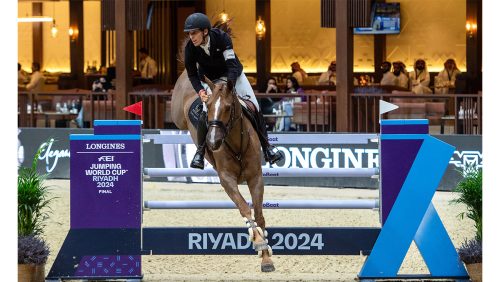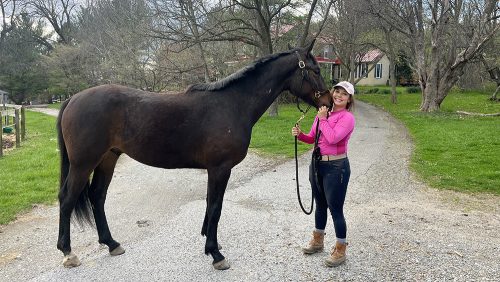The first group of Olympic horses departed from London Stansted Airport on July 29 on a special cargo plane bound for Rio de Janeiro and the Olympic Games, marking the start of the Olympic dream for the world’s best equine athletes.

One of the British event horses and his paperwork as they prepare to load. All Photos by FEI/Jon Stroud
With 34 horses from 10 nations on board, the equine cargo worth multiple millions was loaded into customized pallets for the almost 12-hour flight. The Emirates SkyCargo Boeing 777-F flight was organized by Peden Bloodstock.
Eventing horses from Great Britain, Ireland, Canada, Australia, New Zealand, Zimbabwe, Brazil, Japan, Italy and China were on board Friday’s flight out of Stansted, the first of nine shipments delivering more than 200 horses to Rio International Airport, en route to the Olympic Equestrian Centre in Deodoro Olympic Park.
This highly complex operation involves three hubs in Europe and America: Stansted (England), Liege (Belgium) and Miami (USA). The competing horses and their riders will represent 43 nations from around the globe in the Olympic disciplines of dressage, jumping and eventing.
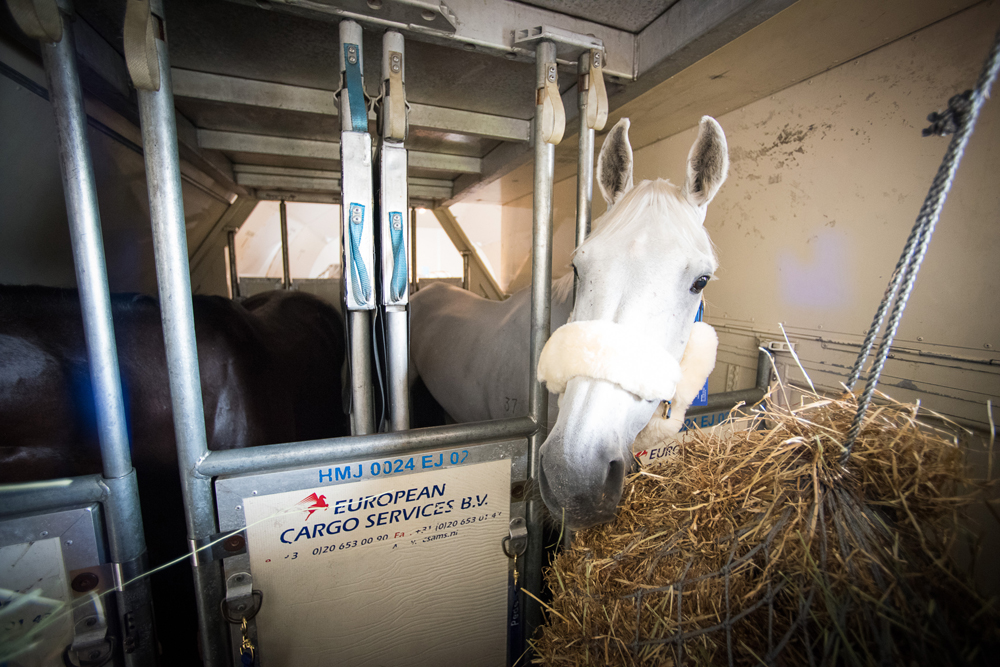
Stansted flight facts:
- Estimated flight time Stansted–Rio: 11 hours, 40 minutes
- Aircraft detail: Emirates SkyCargo Boeing 777-F
- 38,580 lbs of horses flying from Stansted
- 1,135 lbs is the average weight of an eventing horse (1,388 lbs is the average weight of a dressage horse and 1,344 lbs for jumping horses)
- 21,825 lbs of horse equipment
- 13,227 lbs of feed (doesn’t include feed they’ll eat on the flight)
- 10 gallons of water per horse
- 34 eventing horses—representing Great Britain, Ireland, Canada, Australia, New Zealand, Zimbabwe, Brazil, Japan, Italy and China

Did you know:
Baggage allowance: Just like human flights, each equine passenger has an allocated baggage allowance, by weight—however this includes the horse itself! Plus water, hay, 66 lbs of shavings as bedding, water buckets, feed buckets, tack bags (for saddles and bridles), rugs and any spare equipment.
ADVERTISEMENT
Each horse is also allowed: one large haynet, water and his or her own personal bucket, and a small overnight bag with a spare headcollar (halter) and rug, in case it gets chilly.

In-flight meals and drinks: Bran mash before they get on the flight, then hay and water throughout the flight. Some like apple juice in their water to make it a bit tastier.
Passports: Every horse has a passport but, unlike human athletes, they must be microchipped to travel. They all also have an export health certificate.
In-flight wear: Horses, like people, like to travel in comfort. Some may wear a light rug but generally wear as little as possible to stay cool and comfortable. Most will wear protective leg gear.
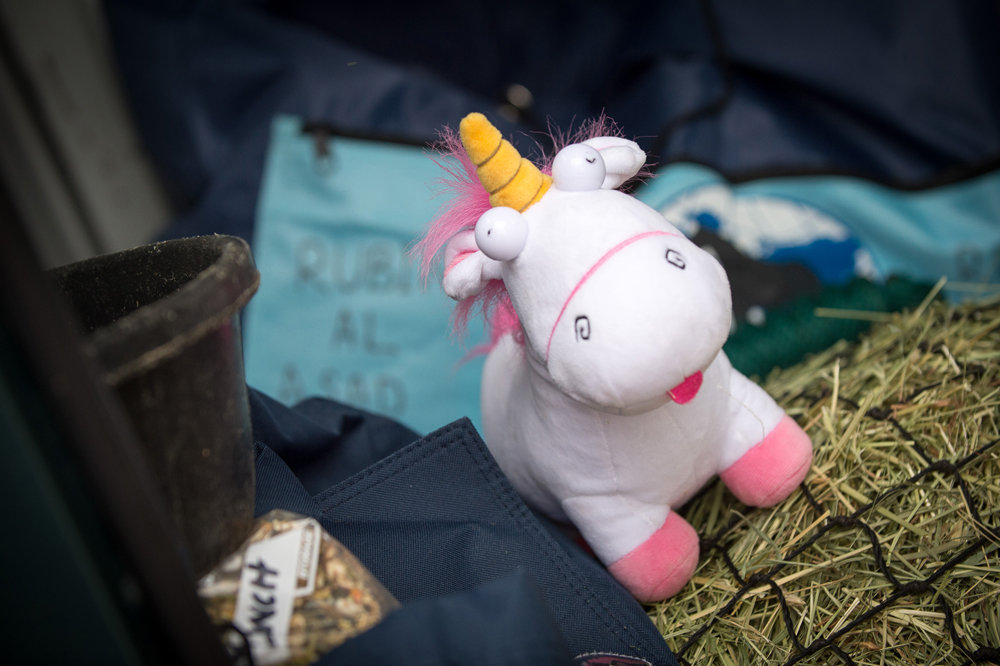
The unicorn mascot of Team GB dressage horse Rubin Al Asad travelling with him on the flight.
Check-in: Flights are a carefully orchestrated operation though Peden Bloodstock, so check-in is a very civilized affair, no fighting for the best seats! All have arrival slots at the airport so that vet checks can be carried out, and loading follows a specific planned order to place all passengers in the right part of the plane.
First Class/Business/Economy: All Olympic horses travel in style, in four-feet wide stalls, with two horses per pallet—the human equivalent of business class. This gives them plenty of room to feel comfortable.

Cabin crew: Specially trained staff fly with the horses, looking after their welfare, comfort and safety. They are known as Flying Grooms.
ADVERTISEMENT
Stallions at the front: Stallions travel at the front of the plane so they aren’t distracted on-flight by the mares.
Is there a doctor on board? This is never an issue if you’re a flying horse, there are always vets on board to ensure happiness and comfort throughout.
Aircraft facts: The horses fly on an Emirates SkyCargo Boeing 777-F aircraft—this is a freight plane, and one especially equipped for the safe and comfortable transport of horses. It has custom-designed horse stalls and controlled temperature zones to ensure maximum comfort and minimal stress for the horses and comes complete with trained and experienced expert personnel who know how to handle horses to safeguard their welfare.

